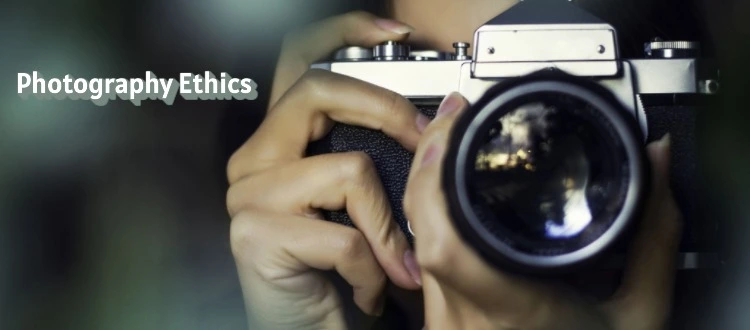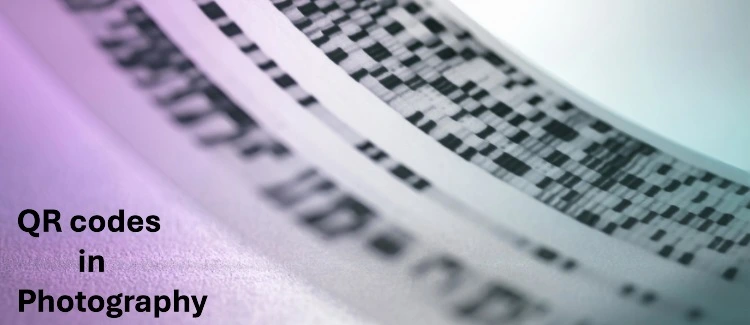Theodore Lowe, Ap #867-859
Sit Rd, Azusa New York
Find us here
Photo Editing Ethics: Navigate 2025 with Integrity

With each click and swipe, you're not just altering pixels; you're shaping perceptions. But how do you ensure that your edits remain ethical? This essential guide is here to unravel the intricacies of photo editing ethics, helping you navigate this delicate balance.
By the end of this article, you'll have a clear understanding of how to maintain the integrity of your images while still making them stand out. Are you ready to explore the fine line between creativity and honesty in the digital age? Keep reading to discover how you can edit responsibly and ethically.
Ethical Challenges In Photo Editing
Navigating the world of photo editing involves tricky ethical decisions. Balancing creativity and truth is essential. Misleading edits can harm trust and spread false information. Understanding these challenges is crucial for responsible editing practices in 2025.
In 2025, photo editing is more popular than ever, but with it comes ethical challenges that every editor must navigate. As you refine your skills, you're bound to encounter situations that test your moral compass. Whether you're editing for personal use or professional projects, understanding the ethical implications is crucial for maintaining integrity and trust.
Understanding The Impact Of Altered Reality
Every edit you make has the potential to change the perception of reality. A simple adjustment might enhance aesthetics, but it can also distort the truth. Consider how altering a photo might impact the viewer's understanding. Think about a time you edited out an object or added a filter. Did it change the story the image was originally meant to tell? This is a question worth pondering as it highlights the fine line between enhancement and deception.
The Dilemma Of Over-editing
Over-editing can make images look artificial, diminishing their authenticity. When you add too many effects, the essence of the original photo can get lost. It's easy to go overboard when trying to make an image stand out. Have you ever spent hours editing a photo only to realize it no longer felt genuine? It's a common pitfall, reminding us to prioritize authenticity over perfection.
Consent And Privacy Concerns
Respecting the privacy and consent of those in your photos is non-negotiable. Before you edit and share images, ensure you have permission from everyone involved. This step is vital in maintaining ethical standards. Imagine you edited a group photo for a friend, but one person didn’t want their image shared. This highlights the importance of clear communication and respecting others' wishes.
Balancing Artistic Expression With Truth
Artistic expression is at the heart of photo editing, but it must be balanced with truth. Your creativity shouldn't overshadow honesty. Ensuring your edits don't mislead viewers is key to ethical practice. Have you ever used editing to convey a mood or message? While it's a powerful tool, it's essential to ensure your work remains a true reflection of the subject.
Handling Cultural Sensitivities
Cultural elements in photos require careful consideration during editing. You must be aware of how changes might affect cultural representation and sensitivity. Even minor edits can unintentionally offend or misrepresent a culture. Have you ever edited a photo from a cultural event? Taking the time to understand and respect cultural nuances is crucial in preserving the integrity of the image. In navigating the ethical challenges of photo editing, being mindful and intentional with every edit will help you maintain credibility. As you continue on this journey, remember that ethical editing not only enhances your work but also earns you the trust of your audience.
Balancing Creativity And Authenticity
Balancing creativity and authenticity in photo editing is key for 2025. Ethical editing enhances images while staying true to reality. This guide helps navigate the fine line between art and honesty.
Balancing creativity and authenticity in photo editing can be a delicate task. As you navigate through the digital realm of 2025, you might find yourself torn between enhancing your images and maintaining their true essence. This section aims to guide you through that balancing act, ensuring your edited photos reflect both artistic flair and genuine representation.
Understanding The Importance Of Authenticity
Authenticity is what connects your audience to your content. When viewers see genuine images, they tend to trust and relate more to what you are presenting. Consider your favorite travel bloggers—often, their images reflect real experiences rather than over-edited scenes. Authenticity fosters trust and credibility. It’s not about showing perfection but about sharing truth. As you edit, ask yourself, does this image still reflect reality?
Creativity: Your Tool For Expression
Creativity allows you to stand out and express your unique perspective. While authenticity anchors your content, creativity lets it soar. Think about how a subtle filter can convey mood or emotion. Use creativity to enhance, not overpower. A well-placed adjustment can highlight the subject without losing its essence. Creativity should complement your story, not rewrite it.
Setting Boundaries In Editing
Establishing boundaries in editing helps maintain authenticity. Decide beforehand how much editing is appropriate for your image. Is it a slight tweak in lighting or a complete overhaul? Over-editing can lead to losing the original message. Set limits that align with your purpose. Ask yourself, does this edit serve the image's intent or just my desire for perfection?
Practical Tips For Balancing Both
Start by evaluating your image's purpose. Is it meant to inform, entertain, or evoke emotion? Adjust your editing techniques accordingly. Use tools like before-and-after comparisons to assess changes. This helps ensure your image remains true to its origin. Remember, sometimes less is more.
Your Personal Editing Philosophy
Developing a personal philosophy in editing helps guide your decisions. Reflect on what you value more—creativity or authenticity. Your philosophy will be your compass in balancing both elements. It should be flexible enough to adapt but firm enough to maintain your core values. What principles will shape your editing style? Balancing creativity and authenticity doesn't have to be a struggle. By setting clear boundaries and focusing on your goals, you can create stunning images that remain true to their origins. How will you navigate this balance in 2025?
Impact Of Digital Manipulation
Digital manipulation has transformed the way we perceive images. It changes how we view reality. This transformation impacts various aspects of society. From social media to journalism, its effects are widespread. Understanding these impacts is crucial. It helps maintain ethical standards in photo editing.
Social Media Influences
Social media platforms are filled with edited images. These images often set unrealistic standards. Many users compare themselves to these altered photos. This comparison affects self-esteem and body image. It creates pressure to edit personal photos. Users seek validation through likes and shares. This cycle can lead to unhealthy habits.
Influencers often use filters and edits. They present a flawless image to followers. This practice can mislead their audience. It blurs the line between reality and fantasy. Followers may feel inadequate due to these edits. This impact is significant. It shapes perceptions of beauty and success.
Journalism And Truth
Journalism relies on truth and accuracy. Digital manipulation can distort this truth. Edited images can mislead readers. They may alter the context of a story. This practice damages credibility. It undermines trust in news sources. Journalists must adhere to ethical guidelines. Transparency in photo editing is essential.
The integrity of journalism is at stake. Readers expect truthful representation of events. Edited photos can create false narratives. These narratives can influence public opinion. They may alter perceptions of reality. Ethical photo editing maintains journalistic standards. It ensures news remains credible and trustworthy.
Guidelines For Ethical Editing
Ethical photo editing in 2025 focuses on honesty and respect. Ensuring images reflect reality maintains trust. Editors should avoid misleading alterations, ensuring transparency and integrity in visual storytelling.
In the ever-evolving world of digital photography, ethical editing remains crucial. As editing tools become more advanced, maintaining integrity is essential. Ethical editing ensures truthfulness and respect for subjects and viewers. This guide outlines key principles for ethical photo editing in 2025. Understanding these guidelines helps photographers maintain credibility and trust.
Understanding The Purpose Of The Edit
Before editing, define the photo's purpose. Is it for storytelling, journalism, or art? Each purpose demands different editing standards. For journalism, accuracy is vital. For art, creativity may take precedence. Knowing the purpose guides ethical editing decisions.
Respecting The Subject's Integrity
Editing should never misrepresent the subject. Avoid altering features that change identity or context. Respectful editing maintains the subject's true essence. Always ask: Does this edit respect the subject's integrity?
Ensuring Authenticity In Representation
Authenticity is key in photo editing. Avoid edits that deceive or mislead viewers. Keep colors, lighting, and context true to the original scene. Authentic representation builds trust with the audience.
Avoiding Misleading Manipulations
Manipulative edits can mislead viewers. Be wary of altering elements that change the photo's meaning. Misleading edits damage credibility and trust. Strive for honesty in every edit.
Transparency With Viewers
Be transparent about significant edits. Inform viewers if major changes are made. Transparency fosters trust and understanding. It shows respect for the audience's right to know.
Adhering To Legal And Copyright Norms
Respect legal and copyright laws in editing. Use licensed software and follow copyright rules. Adhering to these norms avoids legal issues. It also shows respect for original creators.
Balancing Creativity And Honesty
Creativity is a part of editing, but honesty shouldn't be compromised. Balance artistic expression with truthful representation. Creative edits should enhance, not distort, the story.
Role Of Technology In Upholding Ethics
Photo editing ethics in 2025 focus on balancing creativity with honesty. Technology plays a key role in maintaining transparency. Tools are designed to help ensure images remain authentic, avoiding misleading alterations.
In the rapidly evolving world of photo editing, technology plays a crucial role in maintaining ethical standards. As we look towards 2025, the integration of advanced tools is both a boon and a challenge. Ethical photo editing now demands transparency and honesty, ensuring that images remain truthful representations of reality.
Ai And Automation
AI and automation have transformed photo editing, offering unprecedented precision and efficiency. These technologies can automatically adjust lighting, remove blemishes, and even change backgrounds. However, this power comes with responsibility—how can you ensure that these edits uphold ethical standards? Consider using AI settings that highlight rather than alter the truth. By choosing tools that enhance natural features without distorting them, you maintain the integrity of your images. It's about using technology to support your ethical goals, not compromise them.
Tools For Transparency
Transparency tools are becoming essential in promoting ethical photo editing. These tools provide a record of changes made to an image, offering viewers insight into the editing process. For example, some software now includes a 'history' feature that shows each adjustment, from color changes to cropping. Wouldn't it be powerful if your audience could see the creative journey of your images? This transparency builds trust and credibility, encouraging viewers to engage more deeply with your work. By prioritizing transparency, you not only respect your audience but also reinforce your ethical commitment. Incorporating these technologies into your workflow can enhance both the quality and integrity of your photo edits. As you navigate this landscape, remember that technology is a tool—how you use it defines your ethical stance. How will you leverage these advancements to uphold your ethical values in photo editing?
Future Trends In Ethical Photo Editing
Photo editing ethics will focus on transparency and authenticity by 2025. Advanced tools will support ethical choices, ensuring images are truthful. Editors will prioritize accuracy and respect, fostering trust in visual content.
As we step into 2025, the realm of photo editing is evolving rapidly, bringing new ethical challenges and opportunities. With technology advancing at a breakneck speed, photo editors are now equipped with tools that can create stunningly realistic images. However, with this power comes the responsibility to maintain ethical standards.
Emphasis On Authenticity
The demand for authenticity is growing. Audiences crave real, unaltered images that tell genuine stories. You may find yourself asking: How can I ensure my edits enhance rather than distort reality? Sticking to minimal adjustments like lighting and color corrections can maintain the integrity of your photos. Consider the impact of each edit on the viewer's perception. Would altering that element mislead your audience?
Transparency In Editing
Transparency is becoming a key trend in ethical photo editing. Editors are now more open about the changes made to images. Imagine posting a photo online. Would you feel comfortable disclosing each edit if asked? This transparency builds trust with your audience. It encourages a culture of honesty and accountability in the digital space.
Balancing Creativity And Ethics
Striking a balance between creativity and ethics is crucial. Editing should enhance the artistic vision without crossing ethical boundaries. Think about your last creative project. Did your edits add to the storytelling, or did they misrepresent the subject? It's essential to ask yourself these questions to keep your work both creative and ethical.
Use Of Ai Tools
AI tools are becoming a staple in photo editing. They offer unprecedented capabilities but also raise ethical concerns. Consider using AI to automate simple tasks, freeing you to focus on the creative process. However, ensure that AI-generated changes align with your ethical standards. Are you comfortable with the edits AI makes?
Education And Awareness
Ongoing education about ethical standards is vital. Staying informed about the latest trends and guidelines helps you make better decisions. Engage with communities and discussions about photo editing ethics. Are there new perspectives or practices you can learn from? Sharing experiences and knowledge strengthens the collective understanding of ethics in photo editing. Navigating the future of photo editing requires a careful approach. As you embrace new tools and techniques, always keep ethics at the forefront. How will you adapt to these trends while maintaining your commitment to ethical standards?
Conclusion
Navigating photo editing ethics is crucial in 2025. Keeping integrity builds trust. Always consider the impact of your edits. Stay honest with your audience. Transparency matters. Use editing tools responsibly. Balance creativity with truth. Remember, photos tell stories. Let's make them authentic.
Respect subjects and context. This guides ethical choices. Thoughtful editing enhances professionalism. It ensures credibility. As technology evolves, so should our ethics. Stay informed and educate others. Encourage ethical practices in your community. Aim for truth in every image. A responsible approach benefits all.
Related blog posts
QR Codes in Photography: Unlocking Creative Possibilities
Imagine transforming your photography into an interactive experience that captivates your audience. QR codes are revolutionizing the way we share and engage with images.


